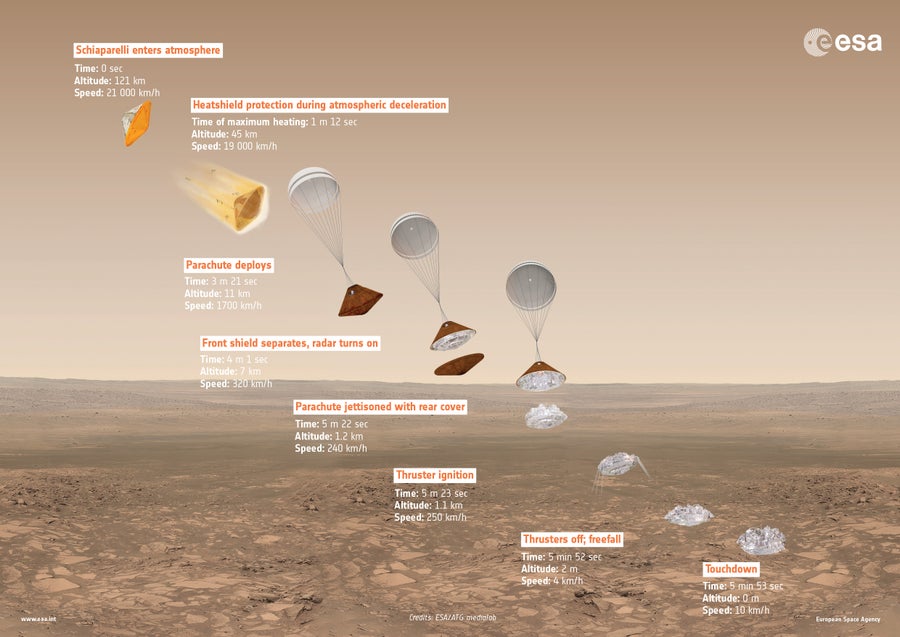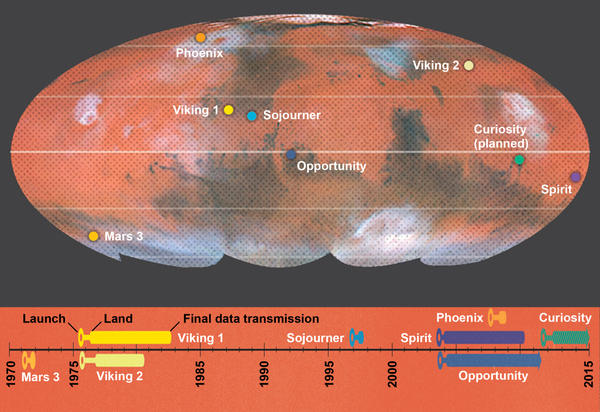This article was published in Scientific American’s former blog network and reflects the views of the author, not necessarily those of Scientific American
On October 16, Schiaparelli separated from the ExoMars Trace Gas Orbiter spacecraft, and headed towards its final destination, the surface of Mars. Schiaparelli is an Entry, Descent, and landing demonstrator Module (EDM). As such, its lifetime on the red planet will be short—just several days. Scientific instruments will contribute data to the broader ExoMars 2016 mission—a collaboration between the European Space Agency (ESA) and its Russian counterpart Roscosmos—but the craft's main goal is to demonstrate the agencies’ ability to execute a controlled Mars landing.
If successful (the craft is expected to land on October 19), Schiaparelli will be the first ESA spacecraft to operate from the surface of Mars. How have others managed the soft-landing feat? Here’s a graphic from the Scientific American archive (November 2011, nine months before Curiosity rolled onto the planet) that shows how, when, and where previous missions approached the tricky task.

On supporting science journalism
If you're enjoying this article, consider supporting our award-winning journalism by subscribing. By purchasing a subscription you are helping to ensure the future of impactful stories about the discoveries and ideas shaping our world today.
As my colleague Lee Billings (space and physics editor) notes, Schiaparelli uses a hybrid technique to land. Like others shown in the graphic above, “it will first bleed off some speed by aerobraking in the Martian atmosphere, followed by deploying parachutes. And then it will ride down on thrusters, similar to how Phoenix landed. But its final stage is sort of a riff on the airbags approach of Spirit/Opportunity—its thrusters will cut off just a few meters above the surface, and it will fall the rest of the way, landing on an underside specially designed to crush/deform to protect the rest of the spacecraft.” Check out the illustration below for details of the descent strategy, direct from ESA.

Credit: ESA, ATG MEDIALAB
